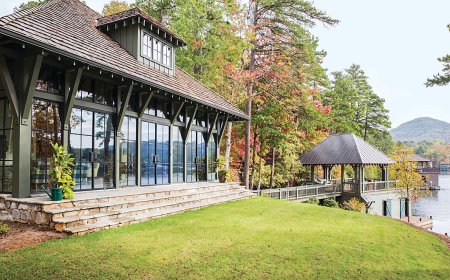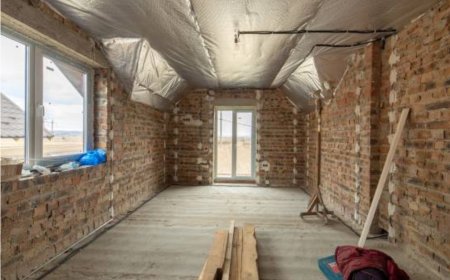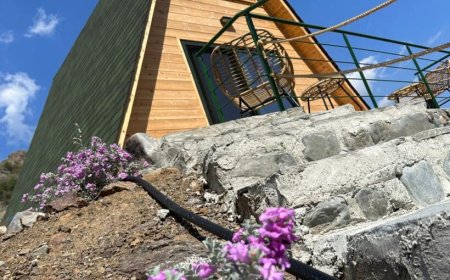The Ultimate Fence Installation Checklist: Everything You Need to Know Before You Build
Whether you build it yourself or hire a pro, careful planning, the right materials, and proper maintenance will ensure your fence stands strong and looks great for years to come.

Planning a fence installation for your property? Whether youre aiming to increase privacy, add security, or simply enhance curb appeal, a well-installed fence can make a big impact. But jumping into the process without preparation can lead to unnecessary costs and frustration.This ultimate checklist breaks down everything you need to know to complete a successful fence installation, from planning and permitting to choosing materials and ensuring durability.
Why Install a Fence in the First Place?
Before choosing a style or material, determine your main goal. This influences the type of fence you need and helps you stay focused during planning.
Common Reasons for Fence Installation
-
Privacy: Prevent prying eyes with solid wood or vinyl panels.
-
Security: Keep pets and children safe, or protect your home from intruders.
-
Curb Appeal: Decorative fences like wrought iron or picket styles enhance visual appeal.
-
Property Boundaries: Clearly mark your land and avoid disputes with neighbors.
-
Noise Reduction: Thick materials like composite or treated wood help block out sound.
Knowing your purpose ensures your fence installation is both functional and visually suitable.
Step 1: Know the Local Laws and Zoning Rules
Research Zoning Regulations
Each locality has rules that govern fence placement, height, and materials. Some neighborhoods also have homeowners association (HOA) guidelines that can override local laws.
Key Things to Check:
-
Maximum fence height
-
Front vs. backyard restrictions
-
Fence style limitations
-
Setback requirements from sidewalks or property lines
-
Whether fencing near driveways or roads needs special permits
Get Permits in Advance
Most municipalities require permits before you begin any fence installation. Skipping this step can result in legal consequences or forced removal.
Step 2: Survey Your Property
Before digging post holes or ordering materials, confirm the boundaries of your land.
Tips to Avoid Disputes
-
Review your propertys plat map or deed.
-
Hire a licensed land surveyor if boundary lines are unclear.
-
Discuss plans with neighbors to avoid conflict, especially for shared lines.
Step 3: Set a Realistic Budget
Costs vary widely depending on materials, size, labor, and terrain. Creating a detailed budget early prevents surprises later.
Budget Considerations
-
Material (wood, vinyl, chain-link, composite, aluminum)
-
Fence length and height
-
Number of gates and any customization
-
Labor or DIY equipment costs
-
Site preparation (leveling, clearing)
-
Permits and inspection fees
Getting quotes from multiple contractors is wise, even if youre considering a DIY approach. Factor in long-term maintenance when estimating total costs.
Step 4: Choose the Right Fence Material
Different materials suit different goals, climates, and budgets. Pick one that aligns with your needs and the style of your home.
Popular Fence Materials
Wood
-
Pros: Natural appearance, customizable, excellent for privacy
-
Cons: Requires ongoing maintenance (sealing, staining)
Vinyl
-
Pros: Durable, low maintenance, good for privacy
-
Cons: Higher upfront cost, brittle in extreme cold
Chain-Link
-
Pros: Affordable, quick installation, durable
-
Cons: Minimal privacy or visual appeal
Composite
-
Pros: Eco-friendly, low maintenance, long-lasting
-
Cons: High initial cost, limited texture options
Metal (Aluminum or Steel)
-
Pros: Strong, stylish, great for security
-
Cons: Can rust if untreated, expensive
Evaluate appearance, maintenance needs, and climate compatibility when choosing a material for your fence installation.
Step 5: Select the Right Fence Style
Fence style impacts both function and aesthetics. Make sure it complements your property and fulfills your intended purpose.
Popular Fence Styles
-
Picket: Classic look, ideal for front yards
-
Privacy Panels: Tall, solid, great for seclusion
-
Lattice-Top: Decorative flair with semi-privacy
-
Shadowbox: Alternating boards for airflow and design appeal
-
Ranch-Style (Post and Rail): Best for large properties or livestock
-
Horizontal Slat: Modern, clean aesthetic
Match style to your architecture and desired look.
Step 6: Measure and Plan Your Layout
Accurate measurements are crucial for ordering materials and calculating labor needs.
Planning Tips
-
Use string lines and stakes to outline your fence path.
-
Measure total linear footage.
-
Mark gate locations and driveways clearly.
-
Identify sloped areas that may need stepped or racked fencing.
Use planning software or graph paper to draw a scaled layout of your fence installation.
Step 7: Decide Between DIY and Professional Installation
Both options have their merits, depending on your experience level and the complexity of your fence design.
DIY Fence Installation
-
Pros: Lower labor costs, personal satisfaction
-
Cons: Time-consuming, requires tools and knowledge
Hiring a Contractor
-
Pros: Efficient, ensures legal compliance, often includes warranties
-
Cons: Higher cost
Choose DIY for small or basic fences. For complex terrain or specialty materials, professional fence installation is often worth the investment.
Step 8: Prepare the Site
Proper preparation ensures a smooth installation process.
Checklist for Site Prep
-
Remove vegetation and debris from the fence line
-
Call utility services to mark underground lines
-
Level uneven ground if necessary
-
Identify tree roots or obstructions that may interfere with posts
Taking time to prepare the site reduces the chance of costly rework or safety issues.
Step 9: Purchase Materials and Tools
Once measurements are complete and the plan is finalized, its time to buy.
What Youll Need
-
Fence panels or pickets
-
Posts (wood, metal, or vinyl)
-
Concrete for post-setting
-
Fasteners (nails, screws, brackets)
-
Gates and hardware
-
Tools: post hole digger, level, drill, measuring tape
Be sure to over-order slightly to account for mistakes or future repairs.
Step 10: Maintain Your Fence
After the fence installation is complete, keep it in top condition with regular upkeep.
Maintenance Tips by Material
-
Wood: Stain or seal every 23 years. Inspect for rot and warping.
-
Vinyl: Wash with soap and water occasionally.
-
Chain-Link: Tighten loose sections and check for rust.
-
Metal: Repaint or treat rust spots as needed.
-
Composite: Minimal maintenance, occasional washing.
A well-maintained fence enhances your property and extends the lifespan of your investment.
Frequently Asked Questions (FAQs)
Q: How long does fence installation typically take?
A: Most residential fence installation projects take 25 days depending on size, material, and weather conditions.
Q: Do I need my neighbors permission to install a fence?
A: If the fence is on your property, no. But its courteous and often beneficial to inform neighbors, especially when sharing boundaries.
Q: What is the cheapest fence to install?
A: Chain-link fences are generally the most affordable, both for materials and labor.
Q: Can I install a fence myself without professional help?
A: Yes, if you have basic tools, time, and some DIY skills. For complex layouts or materials like metal and composite, consider hiring a pro.
Q: What fence type is best for dogs?
A: Wood or vinyl privacy fences are ideal. They block the dogs view, prevent jumping, and are sturdy enough to keep pets contained.
Final Thoughts
A thoughtful, well-planned fence installation can significantly improve your homes value, safety, and appearance. With this checklist, youre equipped to make smart decisions from start to finish.


































